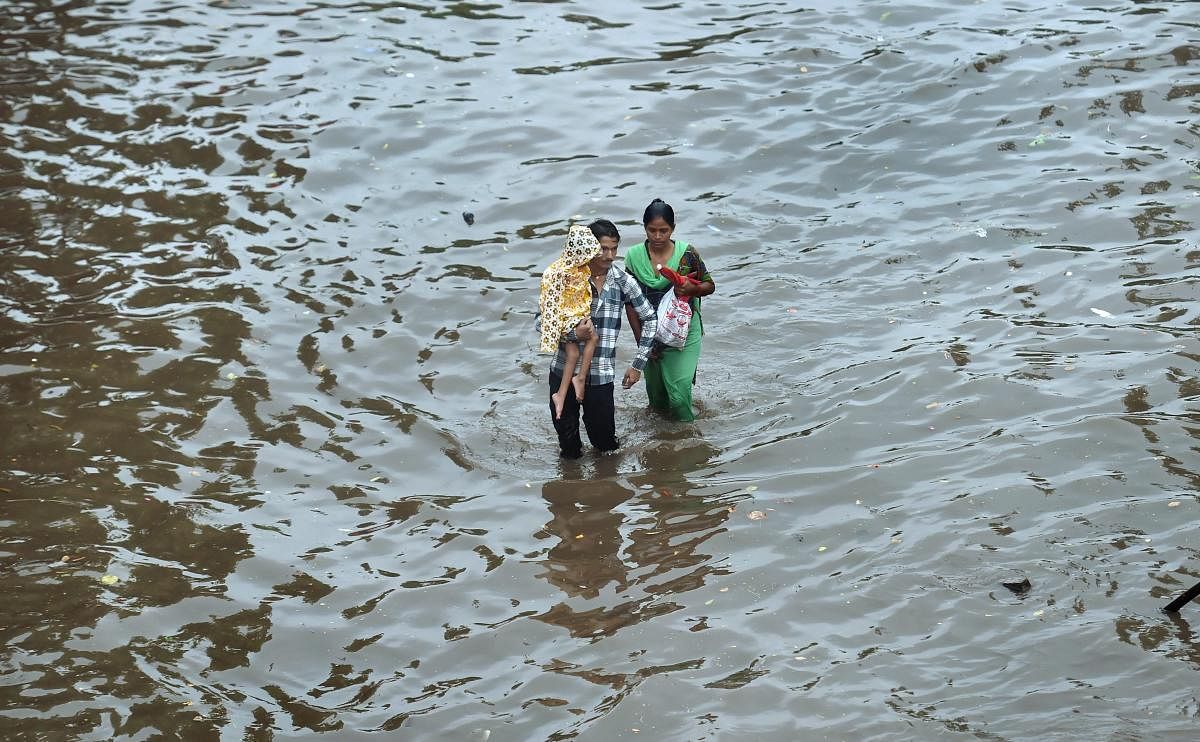Flood and drought seem to occur in many areas nearly simultaneously. This year, we have seen floods in parts of Karnataka, Maharashtra and in dry areas of central and north India. Recently, a central team was in Karnataka for drought assessment; a couple of months ago, a similar team was here to assess the flood in Kodagu and other parts of Western Ghats. The coastal area of Tamil Nadu had also faced heavy rains and floods and were recently hit by cyclone.
Erik Franklin, a researcher at the University of Hawaii’s Institute of Marine Biology, has said that human society will be faced with devastating combined impacts of multiple interacting climate hazards, which means climate change may cause several calamities to hit all at once.
The uncertainties in wind direction, rainfall, temperature increase, sea-level rise and storm surges are all on account of unprecedented carbon pollution and global warming. The only way to save ourselves is for humanity to cap global warming at two degrees Celsius above pre-industrial levels by minimising greenhouse gas emissions. Certainly, the international community is not united in achieving this goal. Scientists have also classified regions according to the severity of the impact. Tropical coastal regions are said to be suffering the most.
In India, coastal areas as well as dry areas will bear the brunt of the climate hazard. Areas along the east and west coasts of peninsular India are at greater risk. We have already experienced a number of cyclonic impacts on the east coast but not so much on the western coast, thanks to better quality forests along the Western Ghats and the coast. But the recent floods in Kerala and Kodagu is a wake-up call for us to make sure that further destruction of the Western Ghats is halted.
Looking at the rainfall pattern, flash floods are going to be more common in the years to come. Scientists at the National Centre for Atmospheric Research in the US have analysed the data collected at weather stations across the globe and have concluded that half of the measured global precipitation in a year falls in 12 days.
The climate models project that this lopsided distribution of rain and snow is likely to become even more skewed. Recent flooding in Mumbai, Chennai and other urban centres bear out this conclusion. The scientists have further gone on to show that half of the annual precipitation will fall in just 11 days by the turn of the century.
Good quality forests on the coast are important to bring rains into the continents. A group of researchers at the St Petersburg Institute of Nuclear Physics say that large forest expanses should be seen as ‘biotic pumps’, drawing moisture from the ocean and driving continental evapo-transpiration and precipitation, thus replenishing, renewing and intensifying the regional water cycle.
For biotic moisture pump to work properly, natural forest cover should be located adjoining the ocean. The absence of continuous cover of tall trees and high leaf area prevents evaporation and the biotic pump would not work. Low leaf index vegetation in the forest cover also reduces precipitation.
As we move away from ocean, the evaporation fluxes damp out exponentially. Continuous forests can carry the fluxes up to 1,200 km from the coastline. Further, aerosols emitted by trees promote condensation. This explains why the Amazon forests bring rains at far-off distances from the coast. Biotic pumps help in cross-continental transport of fluxes and bring rains at local, regional and global level. The real ecosystem services to vegetation may be their ability to return water vapour to atmosphere, intensifying the water cycle.
If the forests are allowed to degrade along the coastline, the moisture cycle will vanish and there will be desertification. This explains why most deserts are along the coast. Coastal regions are more prone to be impacted by climate change hazards.
Bengaluru’s lakes
The world lost 3% of global forest cover in the five-year period taken up for the study by scientists between 2000 and 2005. If this is the rate of deforestation, we can imagine its contribution to global warming. It has been further found that wetlands declined by 50% during the last century, taking a toll on climatic impact.
Let me narrate an example from the handling of urban lakes in Karnataka. Bengaluru lakes are interconnected with rajakaluve. The overflow from lakes located at higher altitude flows through the rajakaluve to lakes located at lower altitudes. As per the Laxman Rao Committee report, we had 215 lakes in 1986. Within a span of three decades, the numbers of live lakes has come down to 81.
In the process of rapid urbanisation, lake lands have been filled up by even government agencies and the areas are used for layouts, public utilities and commercial establishments. Lake lands and rajakaluve are also occupied illegally. Presently, these lakes are subjected to encroachments, illegal mining of earth and sand, dumping of debris, ingression of untreated sewage, discharge of industrial wastes, etc. Consequently, once in four to five years, some localities in the city are flooding and bringing misery to citizens.
From July 2002 to March 2018, urban lakes were managed by the Lake Development Authority (LDA). It was only in 2016 that an Act was promulgated and the authority could take action against culprits responsible for illegal activities in lakes and lake beds. In March 2018, the Act was repealed and the LDA shut down. Urban lakes were handed over to the authority managing irrigation tanks in the state. The state has lost the focus on conservation of urban water-bodies. There is a lack of commitment to fight climate change and global warming.
(The writer is former Principal Chief Conservator of Forests, Karnataka)
